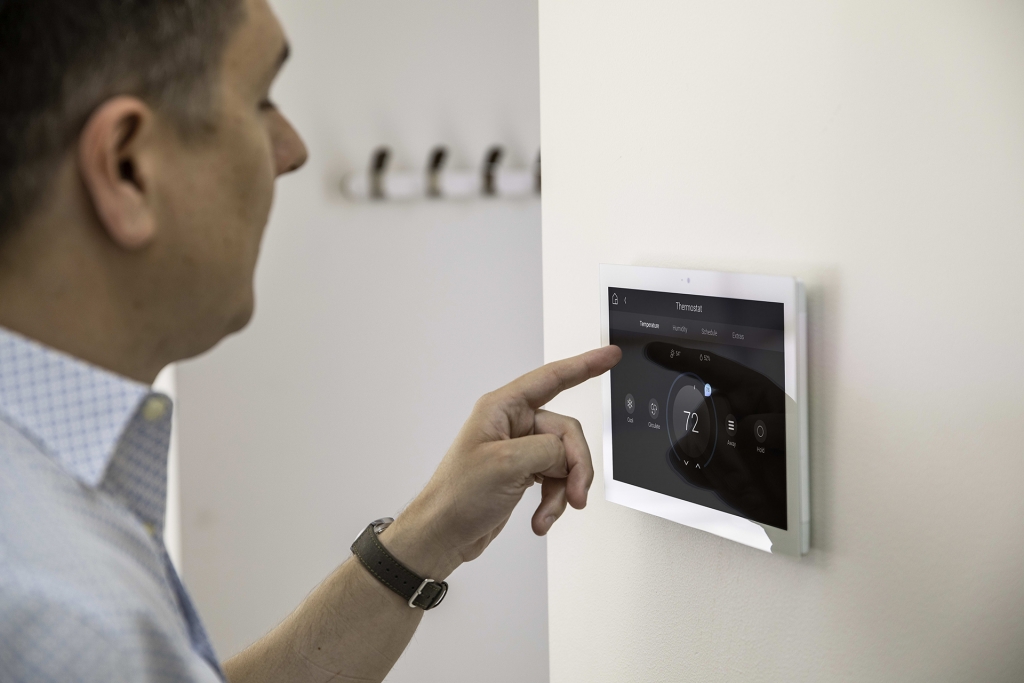Smart Temperature Control System is a system designed to automatically adjust and manage the temperature within a home or commercial environment. Through advanced sensors, controllers, and connectivity technologies, it intelligently manages heating, cooling, fans, and other temperature control devices, enhancing comfort, energy efficiency, and convenience.

Key Components:
- Thermostat:
- Smart Thermostat: The central control device that automatically adjusts heating and cooling systems based on set temperatures and environmental data. Modern smart thermostats typically feature Wi-Fi connectivity, touchscreen interfaces, remote control capabilities, and learning algorithms.
- Sensors:
- Temperature Sensors: Monitor the ambient temperature in real-time and transmit data to the thermostat.
- Humidity Sensors: Measure the air’s humidity and combine with temperature data for more accurate environmental control.
- Motion Sensors: Detect the presence of people in a room, allowing the system to adjust the temperature when the room is unoccupied to save energy.
- Control System:
- Smart Home Platform: Integrates the thermostat and other devices into a home automation system, allowing remote control via mobile apps or voice assistants (like Amazon Alexa or Google Assistant).
- Automation Rules: Set schedules, scenes, and conditional triggers, such as adjusting temperatures based on time, weather changes, or room occupancy.
- Temperature Regulation Devices:
- Heating Systems: Includes underfloor heating, radiators, etc., providing heating functionality.
- Cooling Systems: Includes central air conditioning, wall-mounted air conditioners, etc., providing cooling functionality.
- Fans: Improve air circulation and cooling.
- Energy Management:
- Energy-Saving Features: Analyzes usage data and optimizes operation times to reduce energy waste.
- Reports and Analytics: Provides energy consumption reports and temperature control history to help users understand and optimize energy use.
Application Scenarios:
- Home Environment: Allows family members to enjoy a comfortable temperature while saving on energy costs.
- Office and Commercial Spaces: Enhances workplace comfort, optimizes energy use, and reduces operational costs.
- Vacation Homes and Second Properties: Maintains an appropriate temperature in unoccupied properties to protect equipment and building structures.
Advantages:
- Enhanced Comfort: Automatically adjusts temperatures to meet personal needs, providing an optimal living and working environment.
- Energy Savings: Reduces unnecessary energy consumption and costs through smart adjustments and optimized operation times.
- Remote Control: Allows temperature settings to be adjusted anytime and anywhere via mobile apps or voice assistants, increasing convenience.
- Smart Learning: The system learns user habits and preferences to automatically provide a personalized comfort experience.
Overall, a smart temperature control system enhances the precision and efficiency of temperature regulation through advanced technology and intelligent controls, offering increased convenience and energy savings.
